This article in no way endorses the efficacy of the eventual recipe but is presented for educational and historical purposes only for those interested in what Essiac Tea is.

Essiac Tea was discovered by the nurse Rene Caisse ( The name Essiac is simply her name spelt backwards).
She had the recipe given to her by an English woman who told her that in a meeting with a First National (Amero Indian) Shaman several years before she had been given to believe that a recipe of common-ish herbs taken as a tea regularly would stop or alleviate cancer.
Rene Caisse gave the tea to a number of her aquaintances suffering from cancer, no less her own Mother and an Aunt, with what she claimed to have been remarkable results. Ever since then the tea has been a famous name amongst herbal blends with what results one can only surmise as no clinical tests have ever been done to prove or disprove its effect.
The ingredients are simple, having been refined over the years by the Nurse down to four
Rhubarb Root
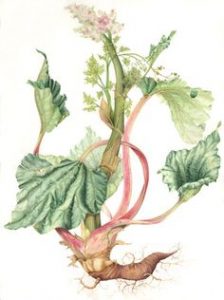 Sheeps Sorrel
Sheeps Sorrel
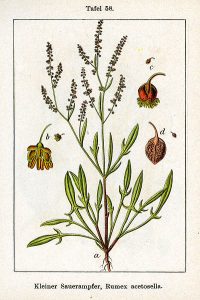 Slippery Elm Bark
Slippery Elm Bark
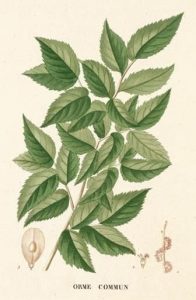 Burdock Root
Burdock Root
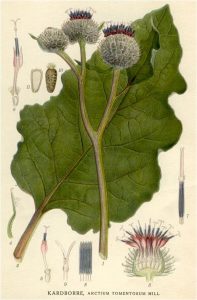
A distillation of recipes:-
250 grams Burdock Root, 200 grams Sheep’s Sorrel, 40 grams Slippery Elm Bark, 20 grams Rhubarb Root
Mix all the herbs together thoroughly and use 25 grams of the mix to 1 litre of fresh water( its up to you if you use tap water, bottled water or filtered water but don’t use water that you have previously boiled in the kettle and left – always use fresh water)
Mix the herbs into the water and bring to simmering point, then simmer gently for around 10 minutes.
drink 1 part (around 25 ml diluted in 50 ml of fresh water) just once a day, either in the morning or just before bed. Its NOT tasty so be prepared!
Save
Save
Save
Save
An emmenagogue is a herb or plant material which stimulates blood flow from the uterus. The strongest of them will help stimulate and regulate menstrual flow such as in hormonal disorders or those who suffer from irregular or light menses. The strongest can also be considered arbortificents which may well stimulate a miscarriage so they should be used with attention and care although you would have to ingest a very large quantity to induce a miscarriage. Emmenagogues should never be used whilst pregnant for obvious reasons.
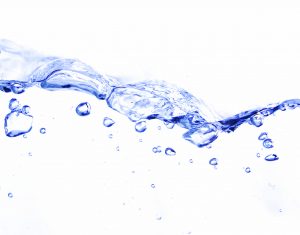 Each of the herbs is generally made into a tea and drunk a couple of times each day for ten days then ten days rest. None of them are particularly tasty if you ask me but it isn’t the taste that you are seeking but the natural chemical constituents of the plant that have the required action.
Each of the herbs is generally made into a tea and drunk a couple of times each day for ten days then ten days rest. None of them are particularly tasty if you ask me but it isn’t the taste that you are seeking but the natural chemical constituents of the plant that have the required action.
It is perfectly acceptable to add things to a tea made from any of the herbs though. Most people will sweeten the tea to improve its flavour but the addition of vanilla or liquorice are both perfect to improve flavour. Dried or fresh Orange or Lemon (or any citrus to tell you the truth) peel is also a great addition to improve the flavour. Don’t add a soft drink or alcohol though – neither will disguise or improve the flavour and the alcohol may well damage the constituents.
Each listing is shown by considered strength
The following is a list of herbal material, each of which is classed as an Emmenagogue:-
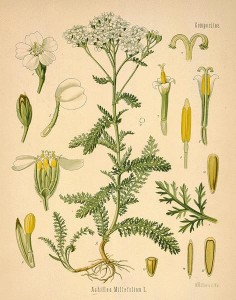 Considered Mild
Considered Mild
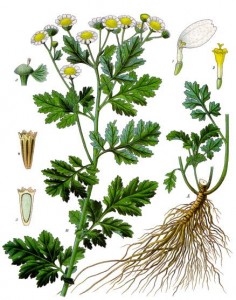 Considered Mild
Considered Mild
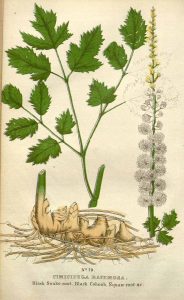 Considered Medium
Considered Medium
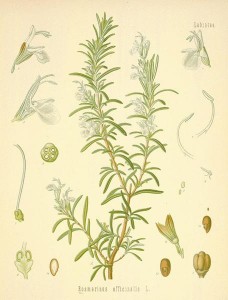 Considered Mild
Considered Mild
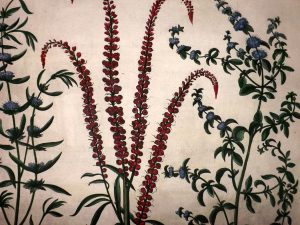 Considered Very Strong
Considered Very Strong
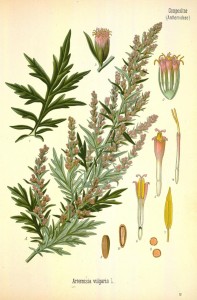 Considered Medium
Considered Medium
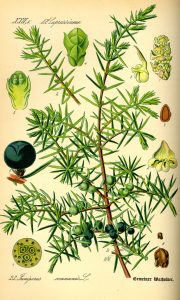 Considered Medium
Considered Medium
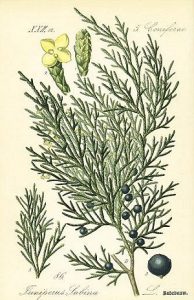 Considered Very Strong
Considered Very Strong
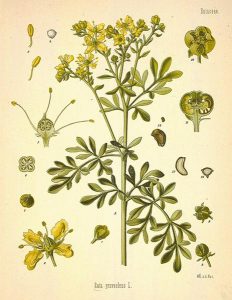 Considered Strong
Considered Strong
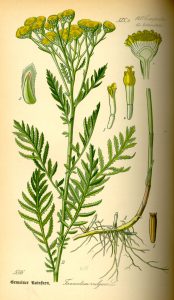 Considered Very Strong
Considered Very Strong
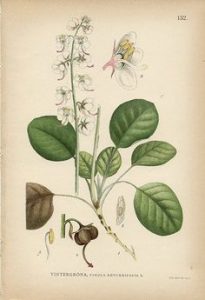 Considered Very Strong
Considered Very Strong
These are really only a small selection of the herbs which are considered to be Emmenagogues – there are many more and, of course, like any product, whether it be pharmaceutical or herbal, what suits you may not suit someone else so it really is a question of trial and error to find the right one for your condition.
Save
Save
Save
Save
Save
Save
Save
Save
Save
Save
Save
Save
Save
Save
Save
Save
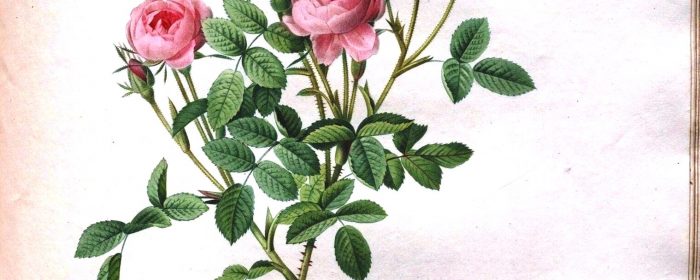
How to Make a Rose Infused Oil
Making a Rose Infused Oil is very easy but time consuming. The results can be well worth it though. Make small quantities at a time and do so every year and you will never run out.
Rose absolute oils are expensive, Rosa otto being the most expensive and Rosa Damascena Maroc being one of the cheaper ones. They are all rich, deep and extremely concentrated; usually dark brown in colour and very viscous. They are quite divine but beyond the purse of most of us and usually sold in tiny retail quantites ( like 2 or 3 ml)
 So why not have a go at making your own infused oil?
So why not have a go at making your own infused oil?
It will not be anywhere near as deep, complex and rich with those honey overtones provided by absolutes (which, on average, use 9000 petals to make just 1ml of the absolute oil) but it could be deliciously floral and refreshing and good for your skin lt alone provide a decent rose oil based perfume. Remember though it ill be an infused oil so much weaker than an absolute.
Rose Infused Oil:-
You need a plentiful supply of rose petals and I really do mean plentiful. This is no job for the faint hearted. If you grow roses in your garden then you need a lot of them and you need to keep picking when they are at their best, not faded and past their best. Choose, if you will, an old fashioned highly perfumed rose. The Old English Roses are perfect. Choose one for its scent but if its just the floral rose secnt in general that you are lookig for then mix and match from any that you grow as long as they are scented.
You need a stable carrier oil to make your Rose infused Oil and to steep the petals in. Now White Mineral Oil is cheap and very stable but is a petroleum by product so whilst it IS ideal you might not want to use it. It is the stuff from which Baby Oil is made but ultimately the choice is yours.
If you want a stable but natural carrier oil then I don’t think you can go far wrong with Jojoba oil (which is really a wax but behaves like an oil) which is both stable and takes a long time to go rancid. It aso has a pleasing yellowish to green colour.
Get yourself a clean and sterilised glass Kilner type jar. One that is airtight but can be easily opened. Wash it thoroughly and then make sure you have sterilised it properly by placing it in a hot oven (200 degres Celsius) for 10 minutes and don’t wipe it with a tea towel which will just transfer all the bacteria on the tea towel to a nice warm glass jar.
Make sure your Rose petals are as clean and free from insects and dust as possible but don’t wash them – you can lightly rinse them but then let them dry.
Pack them as tighly as you can into your Kilner jar whilst it is still warm ( try not to handle the jar ) and then pour your chosen infusing oil over the top so that there is at least a centimetre between the rose petals and the top level of the oil.
Seal and put in a warm, preferably sunny, position for ten days. Open a couple of times very carefully and check that there is no fermentaton taking place and agitate gently every now and again.
The Rose petals will turn brown and the Rose Infused Oil will take on a subtle fragrance of the rose but you can increase the intensity by straining the oil and starting the whole process again with a new load of rose petals and using the same oil.
Keep doing this until the intensity of the fragrance held in the oil is at the level you like. This may take up to 5 or 6 infusions but the more you do the headier the final infused oil will be.
The oil is wonderful for skin care, can smell divine and will last about 6 to 12 months, longer if kept in the fridge. If you want to add a presevative then add some grapefruit seed extract or vitamin c powder to your final oil.
Save
Save
Serene and Tranquil Herbal Infusion Blend is a recipe for a soothing infusion, especially formulated to take the edge off a challenging day. This combination of herbs is reputed to ease nervousness, and calm down jittery stomachs. Alternate with Liver Maintenance and Restore and Revitalize.
Recommendation:- 3 to 5 cups daily.
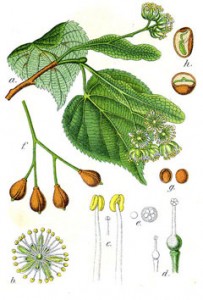
Ingredients for Serene and Tranquil Herbal Infusion Blend:-
Lavender 25 grams
Lime Flowers 100 grams
Liquorice -25 grams
Chamomile – 150 grams
St John’s Wort -100 grams
Herbal teas are blends, inasmuch as they are produced using a variety of ingredients during the manufacturing process. For the most robust teas, a perfect blend must be achieved for premium quality. The tea, no matter the type, should taste full-bodied, never stale or thin.
Herbal tea blends are some of the most flavoursome teas in the world. The process of fermentation is where the blending actually happens. Spices, fruits, herbs, and other natural ingredients are brought together in this process to create unique and dynamic flavours, simple or refined.
The liquorice is just for flavour so if you dislike it you can leave it out with no ill effects. Its the other ingredients that are the active herbs in this blend.
Mix the ingredients thoroughly and its our suggestion that you wait for about 10 days before brewing a pot or two, agitating the mix occasionally during that 10 day period to ensure all the flavours blend well and thoroughly.
When ready and this mix will make around 50 cups or good sized mugs, use a heaped teaspoon of the blend per person or serving and use a cafatierre if you don’t have a straining teapot. Pour freshly boiled water over the blend – wait until the water has stopped bubbling before you pour it which will signify its just off the boil otherwise you will scald the herbs. Always use fresh water rather than water you have previously boiled and left in the kettle. You want the water to have as much oxygen in it as possible.
Let the blend brew for around 5 minutes and then drink.
| Snooze and Slumber Herbal Infusion Blend is a recipe for gentle tonic for the nervous system, this group of herbs is renowned for preparing the body for a restful sleep. Drink Serene and Tranquil Herbal Infusion Blend in the daytime, avoiding caffeine, and Liver Maintence.
We Recommend 1 strong cup before dinner, 1 strong cup after dinner.
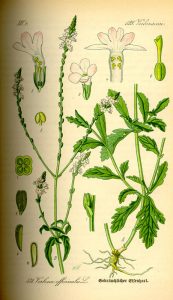
Ingredients for Snooze and Slumber Herbal Infusion Blend:-
Chamomile 10 grams
Fennel 50 grams
Passion Flower 100 grams
Lime Flowers 100 grams
Vervain 100 grams
Herbal teas are blends, inasmuch as they are produced using a variety of ingredients during the manufacturing process. For the most robust teas, a perfect blend must be achieved for premium quality. The tea, no matter the type, should taste full-bodied, never stale or thin.
Herbal tea blends are some of the most flavoursome teas in the world. The process of fermentation is where the blending actually happens. Spices, fruits, herbs, and other natural ingredients are brought together in this process to create unique and dynamic flavours, simple or refined.
Mix the ingredients thoroughly and its our suggestion that you wait for about 10 days before brewing a pot or two, agitating the mix occasionally during that 10 day period to ensure all the flavours blend well and thoroughly.
When ready and this mix will make around 50 cups or good sized mugs, use a heaped teaspoon of the blend per person or serving and use a cafatierre if you don’t have a straining teapot. Pour freshly boiled water over the blend – wait until the water has stopped bubbling before you pour it which will signify its just off the boil otherwise you will scald the herbs. Always use fresh water rather than water you have previously boiled and left in the kettle. You want the water to have as much oxygen in it as possible.
Let the blend brew for around 5 minutes and then drink. |
 |
This blog post about Stomach Soother Herbal Infusion Blend is designed for educational purposes only and is no recommendation.
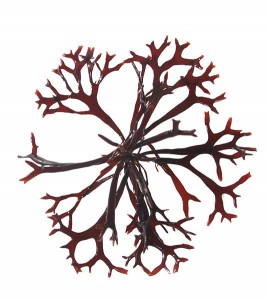
Since the European laws changed in 2011 you might have noticed that many proprietary herbal teas claiming remedial attributes have disappeared from the shelves.
This is simply because the cost of having such blends authorised and licensed after testing and the resultant paperwork (and the time it takes) the law now requires is so costly that small herbal practitioners can make up a batch for you at a cost which will include a consultation fee probably or, better still, you can do so yourself with the help of a recipe such as this.
Smaller herbal suppliers are being strangled by legislation and the larger conglomerates who seek to dominate the market but the smaller herbal experts simply cannot afford the costs involved.
We can share our knowledge and experience, however, which is all this blog seeks to do. If you wish to make up this Stomach Soother Herbal Infusion Blend then you can buy the ingredients from us if you wish. Each ingredient is a link to its page on this site.
Stomach Soother Herbal Infusion Blend:-
Delicious in flavour and scent, this combination contains herbs that are traditionally used to soothe and ease all digestive troubles. We recommend that if you use it you alternate with an Exotic Spiced Chai, a Liver Maintence or a Serene & Tranquil blend.
There is no exact science to blending the herbs lised below and you can scale the recipe up or down as you wish. This will make enough for around 50 servings.
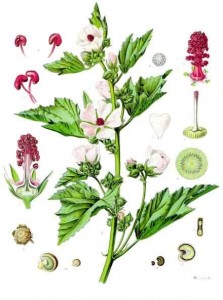
Recommendation:- 1 strong cup after meals.
Ingredients for Stomach Soother Herbal Infusion Blend:-
Irish Moss – 50 grams
Chickweed – 100 grams
Peppermint – 50 grams
Cinnamon Quills – 25 grams
Marshmallow Root – 200 grams
Liquorice – 25 grams
The cinnamon and liquorice are just for flavour so if you dislike these ingredients you can leave them out with no ill effects. Its the other ingredients that are the active herbs in this blend.
Mix the ingredients thoroughly (Break up the cinnamon quills roughly if using them) and its our suggestion that you wait for about 10 days before brewing a pot or two, agitating the mix occasionally during that 10 day period to ensure all the flavours blend well and thoroughly.
When ready and this mix will make around 50 cups or good sized mugs, use a heaped teaspoon of the blend per person or serving and use a cafatierre if you don’t have a straining teapot. Pour freshly boiled water over the blend – wait until the water has stopped bubbling before you pour it which will signify its just off the boil otherwise you will scald the herbs. Always use fresh water rather than water you have previously boiled and left in the kettle. You want the water to have as much oxygen in it as possible.
Let the blend brew for around 5 minutes and then drink.
Herbal Tea and infusions (Tisane or decoction) is a general term for the use of any hot or cold beverage made from plant material steeped in water other than the tea bush (Camellia sinensis) Purists would argue that tea can only be called tea if its made from the Camellia sinensis leaf (in all its forms) and anything else is an infusion!
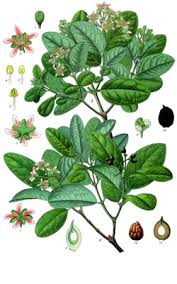
Herbal tea and infusions are mostly consumed for their perceived health benefits which may be for a specific malady where a herb or combination of herbs and botanicals is known to contain chemical constituents that may be helpful in the relief of discomfort or it may be for general health giving properties like high antioxidant content, high vitamin or mineral content required for good health. Not to ignore the many which are consumed purely for the taste and fragrance. Many also have stimulant, anti inflammatory, pain relieving, sedative or relaxing properties and a herbal tea is the most simple way to consume such plant material’s constituents, easy to make, enjoyable to consume and with so many benefits, not least there is no caffeine in them.
Herbal Infusions have been used for nearly as long as written history has existed. Documents, stone tablets, scrolls and dedications have been recovered dating back to as early as Ancient Egypt and Ancient China extolling the virtues and discussing the enjoyment and uses of herbal infusions.
Now it is not to say that true tea from the tea bush doesn’t also contain antioxidants, mostly in white or the much more popular green teas and seasoned herbal tea drinkers will often blend their own herbal mixes with green tea to make a pleasing decoction to be drunk hot or cold.
Some of our favourite herbal tea and infusions:-
A really good example of this is Tuareg Mint Tea which is traditionally made from Nana Mint (The North African Mint) but travellers who have enjoyed it so much whilst visiting that area seem unaware that the Arabic favoured tea is Gunpowder Green Tea and this, blended with Nana Mint, is the traditional drink, sometimes referred to as Thé a la Menthe in those North African countries that have a history of French colonialism.
It is a far superior drink when made this way than with just mint. We have all seen photos or film of grinning tea bearers in soukhs pouring from one glass to another from a great height, the mint tea that is served usually in glasses. This is called stretching and tends to froth the resultant tea a little but is said, by almost all, to improve the flavour – well yes of course it does, it assists greatly in extracting the flavours from the plant material and is fun but messy too for those not too experienced. Such teas are best served in Russian Tea glasses for appearance sake as well as assisting in cooling the hot mixture to a more palatable temperature.
Some herbal tea and infusions are better made using milk rather than water and an unusual one and great for pain relief in arthritic or rheumatoid conditions is Turmeric and Ginger. Believe it or not – it is actually delicious and so easy to make. Turmeric contains large quantities of Curcumin which is anti inflammatory.
Take two heaped teaspoons of turmeric powdered and one of ginger powdered and bring them to boiling point in a drinkable measure of milk in a small saucepan. Simmer for a 3 minutes but do NOT let the milk boil. Add a pinch of your favourite loose leaf tea for extra flavour if you wish and a sweetener of your choice if so desired (honey is best). Stir all the time you are simmering and then let the mixture rest for a minute or so. Pour from one container to another several times to froth or use a commercially made whisker if you like but it tastes better (although it is probably only psychological) if frothed so even vigorous whisking with a fork seems to improve it.
Much herbal tea and infusions is made using the herbal material in sugar syrup in order to make a final cordial that may be drunk diluted with ice cold still water or, more usually, carbonated water.
Karkady is probably one of the best known of these and is widely consumed in Egypt. It is made from whole hibiscus petals and the resultant cordial not only tastes delicious but is a most beautiful purple colour. Simply take 100 grams of Hibiscus petals and steep for twenty four hours in half a litre of water that you have simmered them in for four of five minutes first. Strain the petals out of the liquid after 24 hours and add twice the volume of the liquid in sugar and bring to the boil slowly again stirring until all the sugar crystals are dissolved. This is most important because if the sugar crystals are not completely dissolved the whole mixture will crystallise again. Do not continually boil the mix otherwise the syrup will become too thick. Let the resultant syrup cool and bottle in properly sterilised bottles and refrigerate. Use as a cordial base as and when. Other variants are Rose Petals, Jasmine Flowers, and Orange Blossom.
Irritable Bowel Syndrome or IBS has variable symptoms and medical professionals classify Irritable Bowel Syndrome patients according to a few different sub-types. Although all patients must meet Rome III criteria for diagnosis, their predominant bowel symptom will determine their sub-type. The first two sub-types are self-explanatory:
Constipation Predominant IBS (IBS-C)
Diarrhoea Predominant IBS (IBS-D)
The third sub type is reserved for individual whose symptoms swing from Diarrhoea to Constipation
IBS Alternating Type (IBS-A), also known as IBS-Mixed (IBS-M)
Many cases of Irritable Bowel Syndrome are self diagnosed or diagnosed by a professional with a kind of throw away explanation of IBS as there is no real test that can be undertaken to confirm that the patient is suffering from it. It can only be diagnosed by listening to patient symptoms. Professionals sometimes listen but do not hear! In many cases it is actually a case of lazy bowel and lifestyle that causes the discomfort experienced. There are many areas you may wish to look at in your lifestyle where just a small change or some forethought may make a huge difference.
There are many herbal remedies that have been used to alleviate the symptoms of IBS or of lazy bowel but it also important to understand lifestyle changes that you can make which can also help with marked and rapid effect.
HERBAL REMEDIES
MARSHMALLOW ROOT TEA is a demulcent and has emollient properties which make it useful in inflammation and irritation of the alimentary canal, but also for the urinary and respiratory organs. The dry roots boiled or steeped in water give out half their weight of a gummy matter like starch. Decoctions of the plant, especially of the root, are very useful where the natural mucus has been abraded from the coats of the intestines as so common in Irritable Bowel Syndrome of all three sub types. It is excellent in painful complaints of the urinary organs, exerting a relaxing effect upon the passages, as well as acting curatively. The action of Marsh Mallow root upon the bowels is unaccompanied by any astringency.
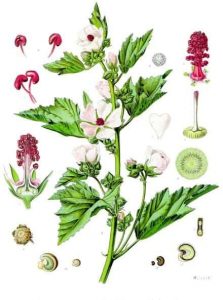 FENNEL TEA is thought to have antispasmodic qualities, to increase intestinal motility, and to have mild laxative effects. It is known to help with bloating and wind Fennel relaxes the smooth muscle lining of the digestive tract (making it an antispasmodic). It also helps expel gas. It kills some bacteria. In Germany, fennel is used like anise and caraway as a treatment for indigestion and gas discomfort.
FENNEL TEA is thought to have antispasmodic qualities, to increase intestinal motility, and to have mild laxative effects. It is known to help with bloating and wind Fennel relaxes the smooth muscle lining of the digestive tract (making it an antispasmodic). It also helps expel gas. It kills some bacteria. In Germany, fennel is used like anise and caraway as a treatment for indigestion and gas discomfort.
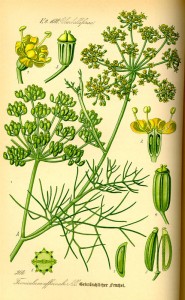
SLIPPERY ELM’S inner bark can be ground into a nutrient-rich gruel. One can survive on this gruel alone for a relatively short period. More importantly for Irritable Bowel Syndrome sufferers it also contains a mucilage that is an excellent remedy for inflamed intestinal tract (as well as sore throats as it happens ). It may be dried and ground to a powder, then made into a tea. Either the tea or the gruel may be used to soothe the digestive tract, such as with irritable bowel syndrome or gastritis. There re no known contraindications for Slippery Elm, since it consists mainly of mucilage and various nutrients; it is not technically a drug.
CHAMOMILE TEA has been drunk for centuries by people who’ve felt sick or stressed as a medicinal cure-all. Now, researchers in England have found new evidence that the popular herbal tea may actually help relieve a wide range of health ailments, including colds, IBS and menstrual cramps. Specifically, for the latter two, drinking the tea is also associated with an increase in urinary levels of glycine, an amino acid that has been shown to relieve muscle spasms. This may explain why the tea appears to be helpful in relieving Irritable Bowel Syndrome and menstrual cramps. Glycine also is known to act as a nerve relaxant, which may also explain why the tea seems to act as a mild sedative.
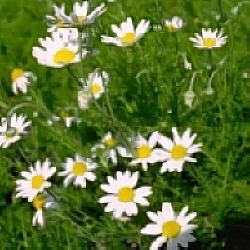
ARTICHOKE LEAF TEA is principally used as an aid to lower cholesterol but newer evidence shows that it may also have some soothing effects on inflamed intestinal tract as it has been used throughout Western Europe for centuries as an aid to digestion. Not enough research has been done in this field yet but folklore and tradition would suggest it is worth try. Aniseed is principally used as a digestif after over indulgence but its calming and gentle laxative properties and anti spasmodic attributes lends itself to helping with gas and bloating as well as helping to calm down inflamed intestinal tissue.
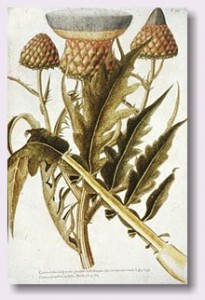
DILL WEED TEA like Fennel has positive effects on bloating and gas, helping to alleviate both.
BISTORT TEA also known as Adderwort, Dragonwort, Easter Giant, Easter Ledger, Easter magiant, Gentle Dock, Great Bistort, Osterick, Oysterloit, Passion Dock, Patience Dock (this name is also used for Rumex patientia), Patient Dock, Pink Pokers, Pudding Grass, Pudding Dock, Red Legs, Snakeweed, Twice-Writhen, and Water Ledges. may be taken to treat peptic ulcers, ulcerative colitis, and conditions such as dysentery and irritable bowel syndrome that give rise to diarrhoea. Bistort is occasionally used in cases of urinary problems such as cystitis and for upper respiratory congestion as well. One of the most strongly astringent of all herbs, bistort tea used topically is used to contract tissues and staunch blood flow. It makes a valuable mouthwash and gargle for treating spongy gums, canker sores, and sore throats, and is also useful as a wash for small burns and wounds, a douche for excessive vaginal discharge, and an ointment for haemorrhoids and anal fissures. It is its astringent qualities for which it is used in the treatment of Diarrhoea Predominant IBS (IBS-D)
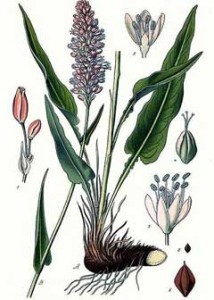
Other herbs/spices used are
• MUGWORT
• VALERIAN
• BORAGE
• GINGER
• ANGELICA ROOT
LIFESTYLE MANAGEMENT
Food group awareness
Food intolerances may play a part in your condition but it is by no means a given, Be aware that grain and dairy intolerances are often blamed where no intolerance exists. Fibre, whilst important in any diet can be overdone and may cause discomfort as a result. Try to obtain your protein and carbohydrates from the widest possible range of food groups as possible. We are omnivores and have evolved that way—we should eat from every food group to maintain the best health. Try to concentrate on protein and just some carbohydrates during the evening and the other way round during the day if you lead a regular 9—5 type of lifestyle.
Chewing your food properly
Bolting food down is one of the worst things you can do but your body will tolerate it for a good while. At some point it will not. The digestive process starts in the mouth and if you can ensure that the food you eat is well chewed then, when you swallow, your stomach does not have to work so hard to churn it before it gets into the small intestine where nutrients are extracted. If the food material is well chewed and a good consistency whilst in the small intestine, it will not stay there for long and moves into the large intestine easily where fluid is extracted or added. If the material is of a good consistency in the large intestine it does not have to work so hard and lumps of undigested food material will not cause the large intestines peristalsis action to be conflicted. The whole digestive transit will more frequent and cause less periodic gaps where gas, bloating and inflammation can occur.
Portion control
Large portions often lead to weight issues and over work the body’s alimentary tract. It is always better to chew small portions well when you are hungry rather than labour over portions that are well beyond what you need to satisfy your hunger—that is simply greed. Combined with bolting food down, large portions will eventually lead to disorders that will take a long time to manifest themselves but when they do, will cause much distress and be difficult to overcome. Think airline portions and eat frequently throughout the day, chewing your food well, not rushing and always thinking you would quite like a little bit more when you’ve finished—but do not have any more. Its a discipline but one that is relatively easy to maintain once used to it and will cause no distress but will provide greater comfort.
Hydration
Do not allow yourself to dehydrate. The recommended daily intake of water is two litres. Dehydration leads to tiredness, irritability and lack of concentration but also means that your body will take fluid from your tissues to provide enough to urinate and excrete and keep internal tissue healthy. If there isn’t enough then you will risk constipation and renal issues. Coffee and tea are both diuretics which means they make you pee more than you drink. Alcohol dehydrates you so do not think any fluid intake will suffice. If you find it difficult to drink a glass of water then do so when you are eating—its far easier to drink water during a meal and the lack of taste is far outweighed by the taste of the food you are eating. It will also help to fill you up more leading to eating smaller amounts as recommended.
Triggers
It is thought that the following may trigger an attack so may be best avoided or kept to a minimum in your diet:-
Caffeine
Fatty Foods
Hidden ingredients like Fructose, Sorbitol etc in processed foods
Tomatoes (principally the seeds)
Chilly peppers
Aubergines (the tiny seeds and the skin as opposed to the flesh)


 Sheeps Sorrel
Sheeps Sorrel Slippery Elm Bark
Slippery Elm Bark
























